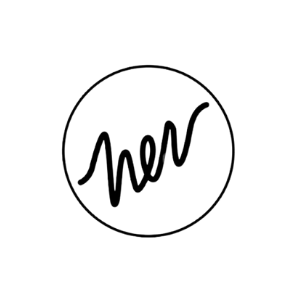
In my conversations with high-earning women, I consistently see one recurring issue. You have too much cash. Sometimes, it’s because you have enough saved for a down payment on a house but you’re not sure if you’re ready to pull the trigger. Sometimes, you just got a big raise or bonus at work and you haven’t quite figured out what to do with the extra income. Finally, maybe you’re not sure what’s about to happen to this topsy turvy economy and you don’t want to lose it all.
While I love all the bad ass women in my life with serious assets (you probably inspired J Lo’s latest money outfit), having too much cash and being too risk averse is NOT a good thing. On another note, if you’re reading this and having too much cash is NOT your current problem (I can relate), you can still read this as a guideline for where you want to be one day.
Why you shouldn’t have too much cash
1. Inflation eats at your money (an average of 2.5% historically). If you have some debt (even low rate student loan debt), you’re probably paying more in interest than you are earning on your cash.
2. Your male counterparts are more than likely investing those their extra dollars. $50,000 in cash is equal to $55,231 if left in a 1% savings account for 10 years versus $81,445 if it was in an investment account growing 5% a year (with inflation and taxes). The more money the bigger the gap. So if you are NOT investing, that is contributing to the gender wealth gap.
Note: I’m not trying to tell you to throw caution to the wind and to invest your emergency fund in some hot tech stock. But, I am telling you that if you have more than 5-6 months of expenses in cash, you should take a hard look at why you need so much cash.
What to do if you have too much cash
1. If you are looking to buy a house but now isn’t the moment, make sure you at least have your “down payment” in a high-yield savings account. If you have debt, do the math. How long would it take you to rebuild your nest egg if you were to pay off your debt? If you only have $20,000 in debt and $100,000 in cash, you may be able to save yourself some interest and rebuild your nest egg with what used to be your monthly loan payment.
2. If you’re making more than you spend and that’s how you’re building up some extra money, start automating that extra money to a brokerage account where you can invest those dollars. To get rid of the decision fatigue, you can also automatically purchase an index fund each month. Investopedia shared some ETFs full of utilities, counter-cyclical businesses (like Walmart) and other investments that perform well even during a recession.
3. Make sure you’re not neglecting your retirement (are you maxing out your 401K with the $19,000 you can contribute in 2019?)
If you’re doing all the fundamentals, there are still more savvy ways to save that will help you get the most bang for your buck on your investments while reducing your taxes. While I’m a big fan of the things taxes pay for, a lower tax rate is a “guaranteed” higher return in your pocket.
What to do after you max out your 401K.
option 1: IRA (Individual Retirement Account)
If you’re maxing out your 401K, your best next step is to open an IRA. You can put up to $6,000 into an IRA in 2019. If you’re maxing out your 401K + an IRA, that’s $25,000 / year in retirement savings (that’s what I call an independent woman!).
Best Practice: If you want to max out your Roth or IRA, set up a monthly $230.77 transfer to an IRA from your checking account (the $6,000 / year IRA limit divided by 21 biweekly paychecks). This way you hit your financial goals even when you’re sleeping.
Roth vs. Traditional IRA
There are two types of IRA – a Roth and a traditional. The main difference is when you pay taxes. A Roth IRA has you pay taxes now. A traditional IRA lets you delay tax payments until later. There are a few questions to ask yourself when choosing between types of IRA:
Do I think my tax rate will be higher now or later? If you are young and are predicting that your earning power will go up with time, it may make sense to pay your taxes NOW instead of later.
Do I want more flexibility in retirement? A traditional IRA requires a distribution (aka that you take out money) once you hit 70 ½. A Roth IRA is more flexible.
Do I care about early withdrawal penalties? A traditional IRA will have a 10% early withdrawal penalty, while a Roth will not. While we hope you NEVER touch your retirement funds, the extra flexibility in a real emergency is nice.
Do I qualify for a Roth? If you make over $137K as an individual or $203K as a married couple filing jointly, you are NOT eligible for a Roth IRA (see table below). If you don’t, a backdoor Roth IRA is also a good option! Here’s a guide on how to do this (it’s not hard).
Opening up an IRA is easy. The Balance has a good article on how to pick the best IRA for you.
option 2: health savings account
What’s a Health Savings Account: For people who have a High-Deductible Health Savings plan (aka your deductible is more than $1,300 for individuals and $2,600 for families and you meet a few other criteria), the government offers a tax-advantaged way to pay for qualified health expenses. That means your root canal, your birth control, your prenatal ultrasound, your prescription retinol, your Cobra premiums when you leave your job to start that company – you can pay for ALL of it with pre-tax dollars. Individuals can contribute $3,500 and families can contribute $7,000 per year to an HSA in 2019.
A great thing about HSAs is that YOU DON’T HAVE TO SPEND THE MONEY EACH YEAR. It will roll over to the next year. If you haven’t touched the money by the time you’re 65, you can treat the you can treat an HSA like a retirement account with the added benefit that there’s no required distributions in retirement. If you’re single and making over $160K, then your marginal tax rate is at least 32%. A $3,500 contribution to your HSA is tax-free income and depending on what state you live in and how much you make, that contribution could save you over $1,100 in taxes each year.
Moms: this might not be for you if you’re looking to cover child-care expenses. Flexible spending accounts NOT HSAs allow you to pay for child care. However, if covering child care is not an issue (you generally cannot have both), an HSA is a better option because it allows you to roll over invested funds while FSA contributions expire each year. Comparison of the two accounts here.
Caveat: if you withdraw the money before 65 to pay for non-healthcare expenses, you will pay a 20% penalty. However, unlike most 401K accounts that require you take a contribution at 65, there is no required distribution for an HSA. This doesn’t seem important now, but as you get closer to retirement, this will help with tax planning.
Step A: Check if your employer offers an HSA?
You should be able to find this information in your employee handbook or even online. 56% of companies offered Health Savings Accounts in 2018.
Step B: If they do NOT, is your plan considered, a High-Deductible Health Savings Plan. If the answer is YES, you can open up for an HSA outside of work.
You should be able to find this information in your employee handbook OR you can email HR
If your employer does NOT offer an HSA you have the option to set one up. You will want to consider things like: fees to manage your account, minimums, and ease of accessing the money if you want to make a qualified expenditure.
If your employer DOES offer an HSA, spend a few minutes reading the fine print. What are the investment options and the corresponding fees? Where is your money now?
If you don’t like your employers option, you can set up your own HSA with the provider of your choosing (employer contributed dollars probably can’t be invested elsewhere but your dollars can be). Instead of having the money sit idly and lose value, look for options to invest in low-fee ETFs like Fidelity or Vanguard.
option 3: a brokerage account
If you STILL want to save more (which is AMAZING since if you’re maxing out your 401K, your IRA, and your HSA, you’re already saving $28,000 / year for retirement), you should open up a brokerage account.
These are generally offered by the same companies that offer IRAs and sometimes HSAs. The main difference is you have to fund these accounts with dollars upon which you paid taxes AND you have to pay taxes on the money you make in these accounts (capital gains tax anyone?)
